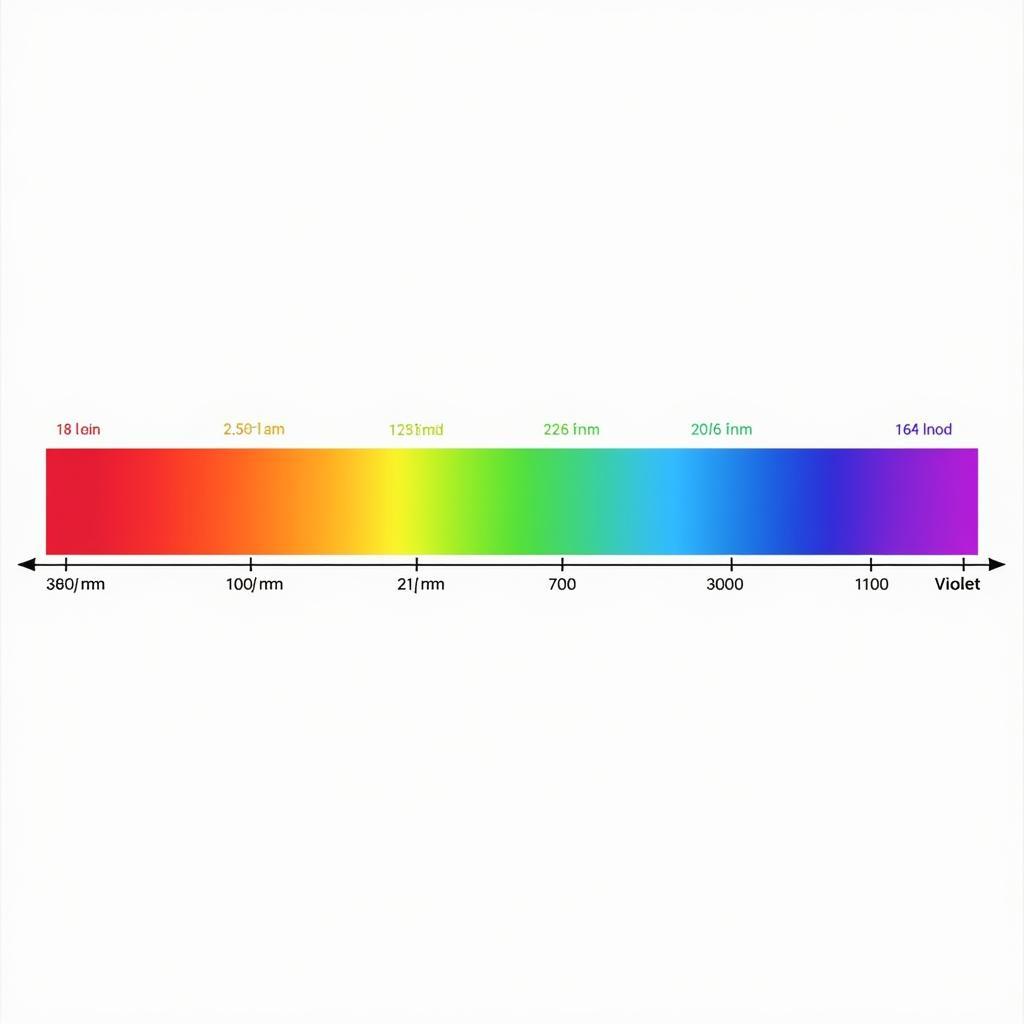Color. It’s everywhere, shaping our perceptions, influencing our emotions, and defining our world. But have you ever stopped to wonder, just how many color are there? The answer, as we’ll explore, is far more complex and fascinating than you might imagine. From the vibrant hues of a rainbow to the subtle shades of a sunset, the world of color is a vast and ever-evolving landscape.
The human eye can perceive millions of colors, a testament to the intricate workings of our visual system. This ability to distinguish between subtle variations in hue and saturation allows us to appreciate the beauty and complexity of the world around us. But even beyond what we can see, there exists an even wider spectrum of color, invisible to the naked eye, but detectable through scientific instruments. Understanding the nature of color, its various classifications, and its impact on our lives is a journey into the heart of art, science, and human perception.
How Many Colors Are There in the Visible Spectrum?
The visible spectrum, the range of electromagnetic radiation that the human eye can detect, contains an infinite number of colors. While we can categorize them into broad groups like red, green, and blue, the subtle gradations between these categories create a continuous spectrum. This means there’s no definitive answer to “how many color” within the visible spectrum. It’s a seamless blend of hues, constantly shifting and changing depending on factors like light source and surrounding colors.
 Visible Spectrum Colors: Exploring the Range of Hues We Can See
Visible Spectrum Colors: Exploring the Range of Hues We Can See
How do we even begin to quantify such an immense range? One approach is to consider the number of colors that can be distinguished by the average human eye, which is estimated to be around 10 million. This number takes into account not only variations in hue, but also differences in saturation and brightness. However, this is still just an approximation, and the actual number may vary from person to person. Similar to how many color are in the rainbow, the visible spectrum encompasses a vast range.
How Do We Perceive and Categorize Colors?
Our perception of color is a complex process involving the interaction of light, our eyes, and our brains. Light waves of different wavelengths stimulate specialized cells in our retinas called cones. These cones are sensitive to different parts of the visible spectrum, and their combined signals are interpreted by the brain as color. This intricate interplay allows us to distinguish between an almost infinite range of hues.
We categorize colors to simplify this vast spectrum. Systems like the RGB (red, green, blue) and CMYK (cyan, magenta, yellow, black) color models provide frameworks for understanding and manipulating color in digital and print media. These models use combinations of primary colors to create a wide range of hues. But even these models cannot fully capture the subtle nuances of color that we perceive in the natural world.
The Role of Culture and Language in Color Perception
Interestingly, our perception and categorization of color are also influenced by culture and language. Some cultures have fewer words for colors than others, and this can affect how they perceive and differentiate between hues. For example, some languages may not have separate words for blue and green, categorizing them both under a single term. This demonstrates how language can shape our understanding of the world around us.
“Color is a powerful tool in design and communication,” says Dr. Anya Sharma, a leading expert in color psychology. “Understanding its nuances can help us create spaces that evoke specific emotions and connect with our target audience on a deeper level.”
How Many Colors in Different Contexts?
The number of colors can vary significantly depending on the context. For example, while the visible spectrum contains countless hues, the number of colors used in a painting or a digital image is limited by the technology used to create it. Similarly, the number of colors available in a set of paints or dyes is finite, dictated by the pigments used. Understanding these limitations is crucial for artists and designers working with color.
how many color roses are there offers an interesting perspective on the diversity of colors within a specific type of flower.
How Many Colors in Digital Design?
Digital design often utilizes the RGB color model, which allows for the representation of millions of colors. However, the actual number of colors displayed on a screen is limited by the screen’s resolution and color depth. This means that while a digital image may contain millions of colors, the screen may only be able to display a smaller subset of those colors.
“Choosing the right color palette is essential for creating effective digital designs,” adds Sharma. “By carefully selecting colors that complement each other and evoke the desired emotions, we can enhance user experience and create visually appealing interfaces.”
How Many Colors Can Animals See?
The range of colors that animals can see varies significantly across different species. Some animals, like dogs, have dichromatic vision, meaning they see a limited range of colors compared to humans. Other animals, like butterflies, have tetrachromatic vision, enabling them to see a much wider spectrum of colors, including ultraviolet light. Exploring the visual world of animals offers a fascinating glimpse into the diversity of color perception in the natural world. You can learn more about how many colors can butterflies see.
 Animal Color Vision: Exploring Different Perspectives
Animal Color Vision: Exploring Different Perspectives
Conclusion: A World of Infinite Hues
So, how many color are there? The answer depends on how we define and measure color. While the visible spectrum offers a continuous and infinite range of hues, our perception and categorization of color are influenced by our biology, culture, and the technology we use. Exploring the world of color is a journey into the heart of human perception and the beauty of the natural world. For those intrigued by the vast array of colors in crafting, how many colors of dmc floss are there provides a detailed look.
FAQ
- What is the visible spectrum?
- How does the human eye perceive color?
- What are the different color models used in design?
- How does culture influence color perception?
- How many colors can animals see?
- What is the difference between hue, saturation, and brightness?
- How can I choose the right color palette for my design project?
Need assistance with your color choices? Contact us at Phone Number: 0373298888, Email: [email protected] or visit us at 86 Cau Giay, Hanoi. Our 24/7 customer service team is ready to help.

